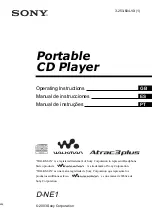
Chapter 9
Shared Shaping Overview
This chapter provides information for configuring shared shaping of traffic on the E
Series router.
QoS topics are discussed in the following sections:
■
Shared Shaping Overview on page 71
■
Shared Shaper Terms on page 72
■
How Shared Shaping Works on page 72
■
Guidelines for Configuring Simple and Compound Shared Shaping on page 74
Shared Shaping Overview
In the JUNOSe software QoS implementation, you configure a traffic-class group to
create a separate scheduler hierarchy. Traffic classes in a traffic-class group are
queued through a scheduler hierarchy dedicated to that group. QoS supports up to
five user-configurable, named traffic-class groups. Traffic classes that do not belong
to any named group belong to the default traffic-class group. With the factory default
configuration, the best-effort traffic class is in the default traffic-class group.
Shared shaping is a mechanism for shaping a logical interface's aggregate traffic to
a rate when the traffic for that logical interface is queued through more than one
scheduler hierarchy. For example, a service provider can configure QoS for voice,
video, and data traffic on a single ATM VC. The video traffic and the voice traffic are
placed in separate scheduler hierarchies from the data traffic to provision the low
latency that is required for voice traffic and the higher bandwidth that is required
for video traffic.
In this scenario, the data traffic needs to be dynamically shaped so that its rate
matches the bandwidth available after the voice and video bandwidth requirements
are met. When less voice and video traffic is being forwarded, then the data traffic
can expand to fill the line rate.
When determining a shared shaping rate, the system includes all bytes in Layer 2
encapsulations. The packets that are included in the rate depend on the node
specified. For example, rates for an Ethernet node include the Ethernet and VLAN
encapsulations.
Shared shaping is typically enabled on the access-facing line module, but you can
enable the feature for any interface type recognized by QoS, on any line module and
any E Series Broadband Services Routers.
Shared Shaping Overview
■
71
Содержание JUNOSE 11.1.X - QUALITY OF SERVICE CONFIGURATION GUIDE 3-21-2010
Страница 6: ...vi...
Страница 24: ...xxiv List of Figures JUNOSe 11 1 x Quality of Service Configuration Guide...
Страница 28: ...xxviii List of Tables JUNOSe 11 1 x Quality of Service Configuration Guide...
Страница 33: ...Part 1 QoS on the E Series Router Quality of Service Overview on page 3 QoS on the E Series Router 1...
Страница 34: ...2 QoS on the E Series Router JUNOSe 11 1 x Quality of Service Configuration Guide...
Страница 44: ...12 Classifying Queuing and Dropping Traffic JUNOSe 11 1 x Quality of Service Configuration Guide...
Страница 76: ...44 Scheduling and Shaping Traffic JUNOSe 11 1 x Quality of Service Configuration Guide...
Страница 156: ...124 Monitoring QoS Scheduling and Shaping JUNOSe 11 1 x Quality of Service Configuration Guide...
Страница 162: ...130 Scaling Subscribers on the TFA ASIC with QoS JUNOSe 11 1 x Quality of Service Configuration Guide...
Страница 190: ...158 Interface Solutions for QoS JUNOSe 11 1 x Quality of Service Configuration Guide...
Страница 238: ...206 Monitoring QoS Configurations for L2TP JUNOSe 11 1 x Quality of Service Configuration Guide...
Страница 256: ...224 Managing Queuing and Scheduling with QoS Parameters JUNOSe 11 1 x Quality of Service Configuration Guide...
Страница 344: ...312 Monitoring and Troubleshooting QoS JUNOSe 11 1 x Quality of Service Configuration Guide...
Страница 388: ...356 Monitoring QoS Parameter Definitions JUNOSe 11 1 x Quality of Service Configuration Guide...
Страница 391: ...Part 8 Index Index on page 361 Index 359...
Страница 392: ...360 Index JUNOSe 11 1 x Quality of Service Configuration Guide...
















































